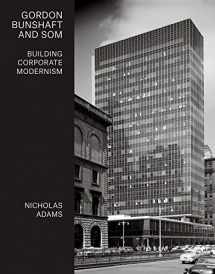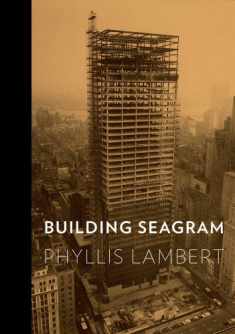
Gordon Bunshaft and SOM: Building Corporate Modernism
ISBN-13:
9780300227475
ISBN-10:
0300227477
Edition:
First Edition
Author:
Nicholas Adams
Publication date:
2019
Publisher:
Yale University Press
Format:
Hardcover
296 pages
FREE US shipping
on ALL non-marketplace orders
Rent
35 days
Due May 28, 2024
35 days
from $23.70
USD
Marketplace
from $23.13
USD
Marketplace offers
Seller
Condition
Note
Seller
Condition
Used - Good
Book details
ISBN-13:
9780300227475
ISBN-10:
0300227477
Edition:
First Edition
Author:
Nicholas Adams
Publication date:
2019
Publisher:
Yale University Press
Format:
Hardcover
296 pages
Summary
Gordon Bunshaft and SOM: Building Corporate Modernism (ISBN-13: 9780300227475 and ISBN-10: 0300227477), written by authors
Nicholas Adams, was published by Yale University Press in 2019.
With an overall rating of 4.5 stars, it's a notable title among other
Individual Architects & Firms
(Architecture, Buildings, Artists, Architects & Photographers, Arts & Literature) books. You can easily purchase or rent Gordon Bunshaft and SOM: Building Corporate Modernism (Hardcover) from BooksRun,
along with many other new and used
Individual Architects & Firms
books
and textbooks.
And, if you're looking to sell your copy, our current buyback offer is $7.52.
Description
A nuanced portrait of the 20th-century architect whose work defined the built aesthetic of corporate America
Gordon Bunshaft’s (1909–1990) landmark 1952 design for Lever House reshaped the Manhattan skyline and elevated the reputation of Skidmore, Owings & Merrill (SOM), the firm where he would spend more than 40 years as a partner. Although this enigmatic architect left behind few records, his legacy endures in the corporate headquarters, museums, and libraries that were built in his distinctive modernist style. Bunshaft’s career was marked by shifts in material. Glass and steel structures of the 1950s, such as New York’s Chase Manhattan Bank, gave way to revolutionary designs in concrete, such as the Beinecke Rare Book and Manuscript Library at Yale University and the doughnut-shaped Hirshhorn Museum in Washington, DC. Bunshaft’s collaborations with artists, including Isamu Noguchi, Jean Dubuffet, and Henry Moore, were of paramount importance throughout his career.
Nicholas Adams explores the contested line between Bunshaft’s ambition for acclaim as a singular artistic genius and the collaborative structure of SOM’s architectural partnership. Bunshaft received the Pritzker Architecture Prize in 1988 and remains the only SOM partner to have achieved this distinction. Adams counters Bunshaft’s maxim that “the building speaks for itself” with necessary critical context about this modernist moment at a time when the future of Bunshaft’s iconic works is very much in question.
Gordon Bunshaft’s (1909–1990) landmark 1952 design for Lever House reshaped the Manhattan skyline and elevated the reputation of Skidmore, Owings & Merrill (SOM), the firm where he would spend more than 40 years as a partner. Although this enigmatic architect left behind few records, his legacy endures in the corporate headquarters, museums, and libraries that were built in his distinctive modernist style. Bunshaft’s career was marked by shifts in material. Glass and steel structures of the 1950s, such as New York’s Chase Manhattan Bank, gave way to revolutionary designs in concrete, such as the Beinecke Rare Book and Manuscript Library at Yale University and the doughnut-shaped Hirshhorn Museum in Washington, DC. Bunshaft’s collaborations with artists, including Isamu Noguchi, Jean Dubuffet, and Henry Moore, were of paramount importance throughout his career.
Nicholas Adams explores the contested line between Bunshaft’s ambition for acclaim as a singular artistic genius and the collaborative structure of SOM’s architectural partnership. Bunshaft received the Pritzker Architecture Prize in 1988 and remains the only SOM partner to have achieved this distinction. Adams counters Bunshaft’s maxim that “the building speaks for itself” with necessary critical context about this modernist moment at a time when the future of Bunshaft’s iconic works is very much in question.


We would LOVE it if you could help us and other readers by reviewing the book
Book review

Congratulations! We have received your book review.
{user}
{createdAt}
by {truncated_author}




